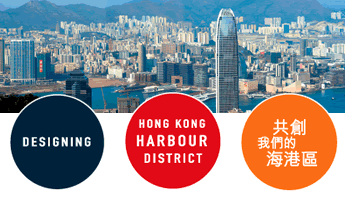




![]()
Wednesday, May 12, 2004
Lessons
from the Big Dig
EDITH TERRY
Cities have common problems. Do they have common solutions, too? Take
Boston and Hong Kong. They are as different as can be, Boston with its
traditions of political and intellectual leadership, the Kennedy family
and Harvard, Hong Kong with the world's highest per-capita ratio of Mercedes-Benz
ownership and a penchant for making money.
Hong Kong has a great deal to learn from the New England city, which has nearly completed a wrenching public construction exercise that exemplifies many of the ideals of Hong Kong's urban activists. Boston's "Big Dig" has enhanced the city's quality of life while improving its traffic flow. This sounds simple, but cost US$15 billion and was enormously costly in social and political terms, as well. The lesson for Hong Kong is not only that Bostonians were willing to pay the price, but how and why.
The Big Dig took Boston's decaying inter-state highway system and moved it underground. In the 1950s, Boston followed the transport model common to many North American cities, building elevated expressways that cut off the city's historic neighbourhoods from each other and from the waterfront. Hong Kong's planners continue to follow this model, and have more elevated highways on the drawing boards. Newly sensitised to public opinion by the controversy over the reclamation of Victoria Harbour, the government is finally beginning to listen to arguments in favour of burying its elevated highway system and not creating new ones. Not unreasonably, planners will wonder how to win over the myriad of people whose lives would be interrupted.
Boston learned its lessons of public trust the hard way. The project ran into trouble in 1997, when it was only halfway through but already US$2 billion over the total projected budget. The Massachusetts Turnpike Authority hired Sean O'Neill, co-founder of an Irish cable channel in Boston, and an expert in crisis communications, to take over damage control.
Improbably, Mr O'Neill and his colleagues were able to turn a construction site into a national media celebrity and Boston's sweetheart. They did this by making the exercise seem like fun, and by involving the community.
A web site, www.bigdig.com, invited the world to "come see your Big Dig" with live videocam shows and daily news events.
Over one two-day period, the Big Dig's communications team organised workshops for 10,000 urban residents. First, they called more-casual meetings, identifying the "movers and shakers" in the affected districts. They put these people on the city payroll and invited them to organise larger meetings that led to dozens of costly changes in the original plan, but which won the community's confidence. Over 10 years, Boston spent US$462 million on communications - three per cent of the entire project's cost.
By comparison, Hong Kong spends next to nothing on communications for public works. The government conducts its image-making through the Government Information Services, which had expenditure of HK$369 million in the 2003 financial year. Some 487 government advisory committees serve as the main avenue for public input to policy. These include little in the way of public relations support and less in terms of community engagement. Historically, consultations have taken place behind closed doors and maintained strict confidentiality. Their purpose has been to validate government policy, not to challenge it. This top-down approach has its place in history, and should stay there. The way to build trust is from the bottom up.
What Hong Kong needs to learn from Boston is not just what the Big Dig accomplished - burying its highway - but how it got its citizens to buy into it. It took them seriously. We should do the same.
Edith Terry is a writer based in Hong Kong.
